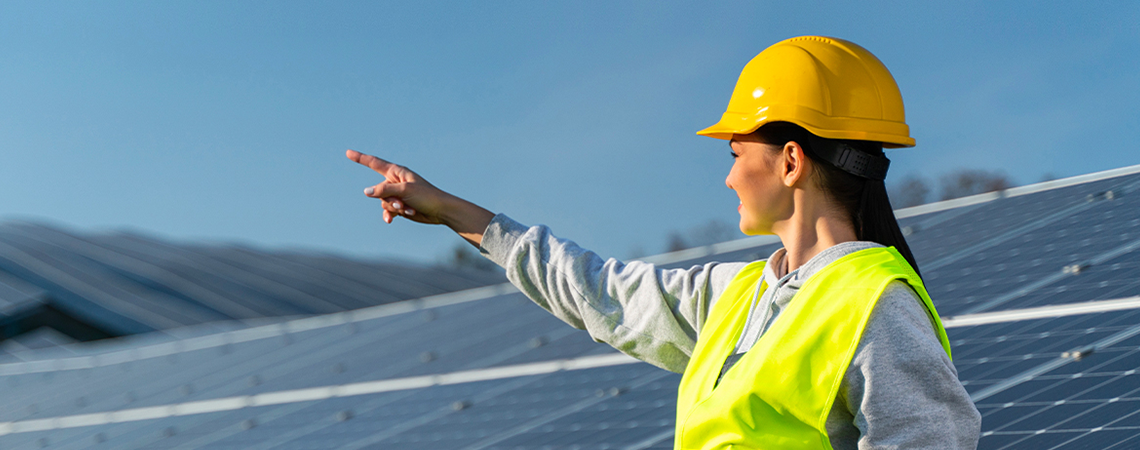Don’t stop here
There’s much more to discover!

A recent IRENA report confirms the photovoltaic industry as a leader in gender equality and reaffirms the essential contribution to the sector by women.
Women are playing an increasing role in the energy transition, especially in the photovoltaic industry. There are some very interesting data collected by the International Renewable Energy Agency (IRENA) in its report Solar PV: A Gender Perspective, which analyzes the working conditions of women in the renewable and photovoltaic industries. The analysis clearly shows that this technology targeting new patterns of production and consumption simultaneously promotes female employment.
Forty percent of the more than 4 million workers in PV are women. This proportion is greater than in any other sector in renewables, which record an average 32 percent women. Most women employed in the PV segment are employed in administration, where they account for 58 percent of the total.
Beyond the numbers, however, it is important to note how the contribution of female workers is essential to the development of PV. The IRENA report clearly underlines this fact: “Climate change and gender equality are inextricably linked. Strategies and programs addressing the effects of climate change must include the participation, experiences and voices of women – not only because they are disproportionately impacted by climate change but also because they have valuable points of view, experience and knowledge.” Indeed, the high proportion of women employed in the sector has positive effects on productivity and per capita GDP and distributes wealth to households.
The female figures who have enabled the development of solar energy include the scientist Mária Telkes, who symbolizes the role of women in this field so strongly that she has earned the nickname the “Sun Queen.” Born in Budapest in 1900, after graduating in physics she moved to the United States, where, just before the outbreak of World War II, she joined the Solar Energy Conversion Project at MIT (Massachusetts Institute of Technology) in Boston. From that moment onwards, throughout her very long career, she devoted herself to solar energy applications, designing devices including the solar distiller for converting seawater into drinking water–also supplied in the armed forces' emergency kits–and the solar oven, which can be used to cook in places without mains electricity.
What made her famous, however, was the solar house projects: the first, in 1949, was the Dover Sun House heated by transforming solar energy into chemical energy through the use of Glauber's salt; the second, on the other hand, the Carlisle Solar House was developed in 1980 together with MIT Boston and the US Department of Energy. Considered among the greatest inventors of the century, Mária Telkes understood as early as the mid-20th century the need to identify new sources of energy. This same foresight is acknowledged by the IRENA report as one of the valuable qualities contributed by women and essential for the development of PV.
There’s much more to discover!
Plenitude launches Supplier Days to stimulate collaboration and innovation within its supply chain. Reaching a destination requires everyone to row in the same direction: this implies that everyone is fully aware of the target port and collaboratively charts the course to reach it. Plenitude Supplier Days embody this ethos. The inaugural meeting...
Interview with Professor Stefano Pareglio, professor of Economics at the Catholic University of the Sacred Heart and an expert on climate change. We talk to him about the green transition in the business world. Companies are beginning to integrate sustain
In recent months, the company has initiated an internal course to train new IT Solution Architects, professionals who play a key role in managing complex IT systems.